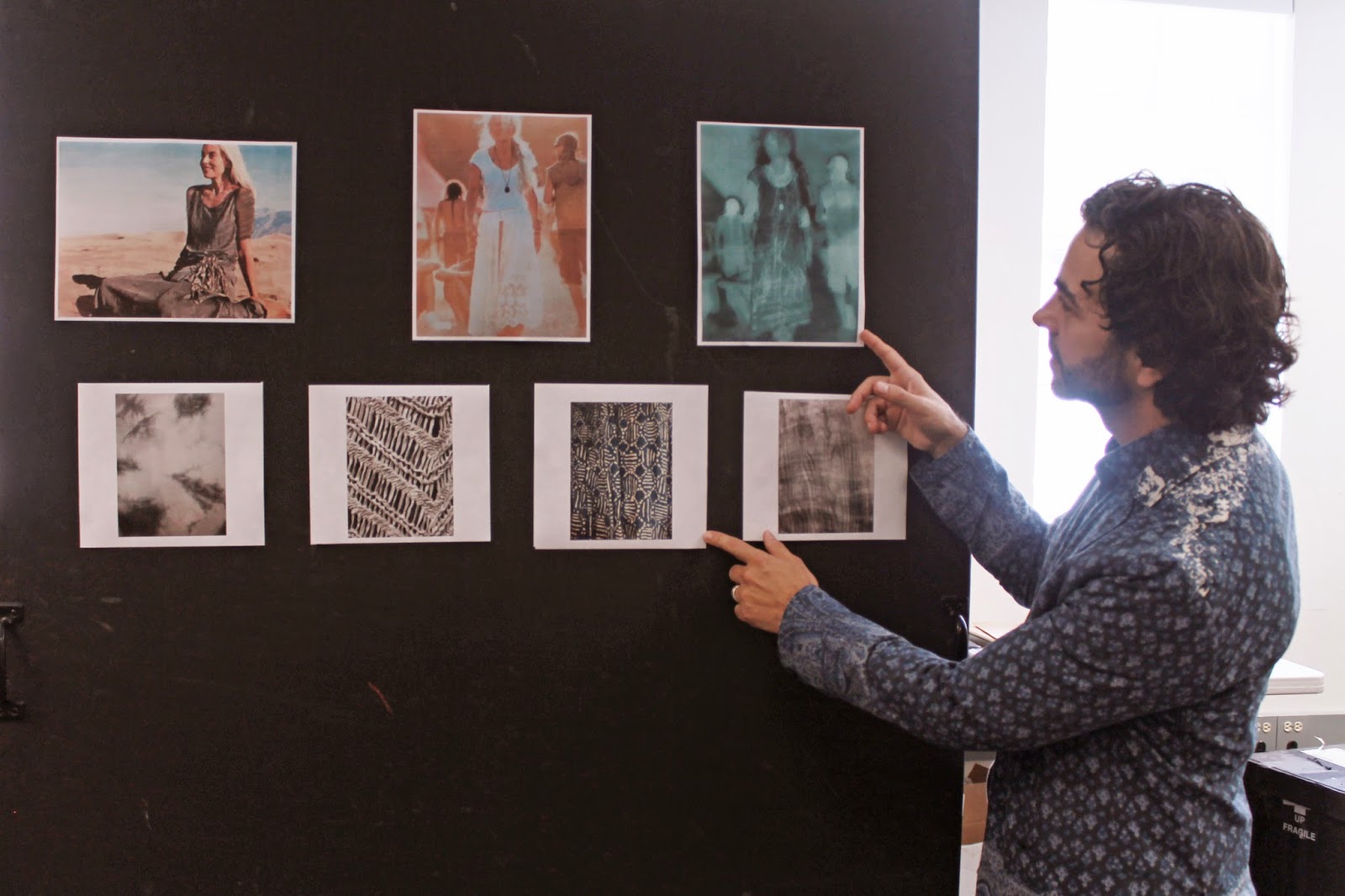A Very Real Woman
A Very Real Woman
An Interview with Testament Costume
Designer Jessie Amoroso
By Adam Odsess-Rubin
 |
| Costume designer Jessie Amoroso shares some of the images that inspired his design. |
What research did you do for Testament?
Mary is such a prominent
figure that has been written about for centuries, so there is quite a bit out
there to digest. Luckily, we have Michael Paller, who did an amazing job with
the dramaturgy. But research starts with the script, and Colm Tóibín wrote an
amazing piece of literature. I knew we weren’t going for a
“swords-and-sandals” portrayal of this great woman, but we didn’t want
something so abstract that she would be removed from what we know of Mary. I
knew early on that the color blue would appear as a watered-down blue-gray. I
also looked at historical clothing, and I found that it was usually brown in
color, and the fabrics were natural: linen and flax. I took all those images
and presented them to Carey [Perloff], and we tried to see where the story was
going.
What have your conversations with director Carey Perloff and
actor Seana McKenna been like?
We spoke a lot about the realism of the
costume and the idea that it may need to transform during the process. The
character relates several stories in Testament, and it would be nice if
the costume could help facilitate that; maybe a scarf becomes a shawl, or maybe
it’s wrapped around the waist. The costume should have a transformative effect
so that she can inhabit some of the other characters she talks about. She
reenacts the wedding scene and the Crucifixion; she visits temples, walks
through villages, and speaks to other people. Seana may want her costume to
transform as she transitions between recollections.
You have the task of designing a costume for a
play that is set in a nonspecific time and place. How do you mediate that?
In the script, Mary speaks as if the events surrounding her son’s execution have just happened,
but for us, they happened two millennia ago. Tóibín takes it to a place of realism,
and he tries to explore the larger ideas and how they pertain to our daily lives.
If we put that story in a world of stone, mud, heat, and sandals, it would take
away from the audience’s ability to identify with her. We will use contemporary
clothing, which is an idiom that audiences will recognize. That way, they won’t
be put off by the image of the Mother of God, who is a character beyond
reproach. People will relate to Mary much better if they don’t have to decipher
what the costume is.
Is the costume meant to be a bit ambiguous?
Not so much ambiguous as universal.
We talked a lot about whether or not we would include a crucifix. If this
character actually is Mary, Mother of God, would she wear a crucifix? We
decided she probably wouldn’t. We will answer questions like that every day in
the rehearsal room. I plan on going to rehearsal quite a bit to talk about what
the costume needs to do, and to see how things evolve with Seana and Carey on a
daily basis.
This is my third time working with Seana, so I have an idea of what she is
comfortable in and how she has felt about past characters. Luckily, we did a
reading of Testament earlier this year, so I saw her perform it once. I
was able to get a good idea of how she moves the character, where she puts some
of the exclamation points. That helped me choose a starting place.
Do you agree with the way Tóibín has shaped Mary?
I do. It’s almost like she is the
mother of an executive. He’s more important to his shareholders, as their
leader and the moneymaker, than he is to his parents; they might have other
children, or maybe he wasn’t their favorite child. Parents have very different
relationships with their children from the relationships the children have to
the rest of the world. That’s something to remember: everyone is someone’s
child.
For more about Testament, be sure to read our latest edition of Words on Plays!
Click here to order online.
Click here to order online.
For tickets to Testament visit act-sf.org/testament.

